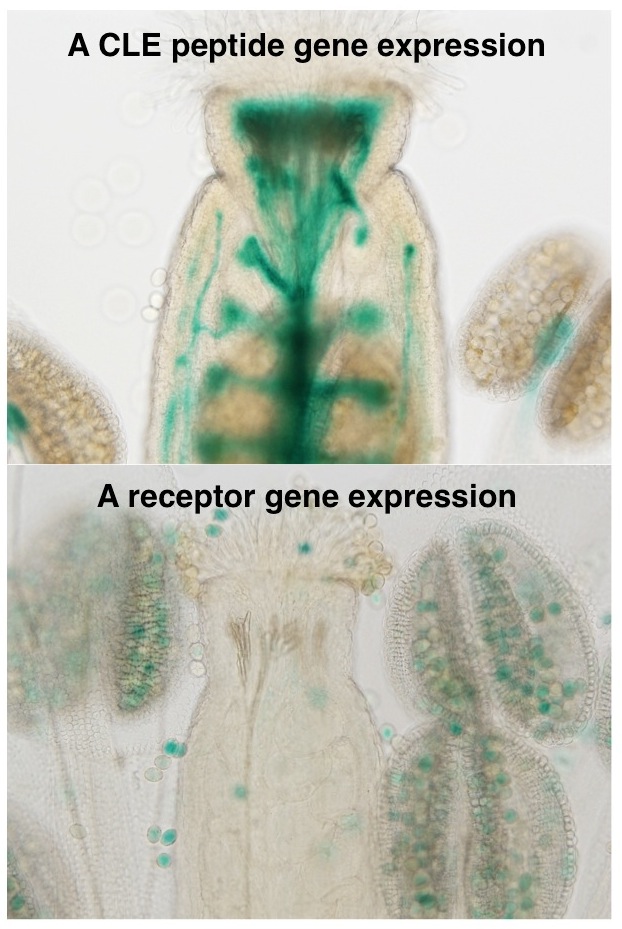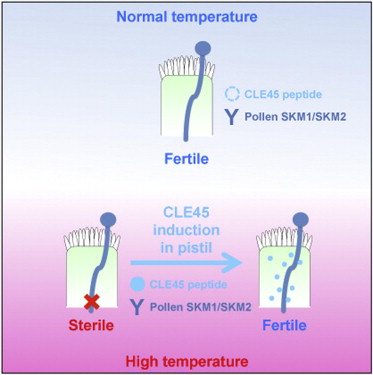Image of the month (April 2014)
CLE peptide's role in heat stress
 
These images are from recent article by Endo et al 2013 :
http://www.ncbi.nlm.nih.gov/pubmed/23910659
Under normal condition (22°C), CLE45 peptide is expressed only in the stigma. However, under heat-stressed conditions (30°C), as shown in the top image on the left, the expression of CLE45 peptide was found both in the style and the transmitting tract of the pistil. The putative receptors of this ligand showed a complimentary expression only in the pollen (bottom image on the left). These two components together aid pollen grow successfully in the heat-stressed conditions, as loss of the ligand or both putative recpetors lead to decreased pollen tube growth and a reduced seed-set.
Abstract of this paper from Endo et al 2013:
Flowering plants in the reproductive stage are particularly vulnerable to ambient temperature fluctuations. Nevertheless, they maintain seed production under certain levels of exposure to temperature change. The mechanisms underlying this temperature tolerance are largely unknown. Using an in vitro Arabidopsis pollen tube culture, we found that a synthetic CLV3/ESR-related peptide, CLE45, prolonged pollen tube growth. A subsequent screen of Arabidopsis mutants of leucine-rich repeat receptor-like kinase genes identified two candidate receptors for CLE45 peptide, STERILITY-REGULATING KINASE MEMBER1 (SKM1) and SKM2. The double loss-of-function mutant was insensitive to CLE45 peptide in terms of pollen tube growth in vitro. The SKM1 protein actually interacted with CLE45 peptide. CLE45 was preferentially expressed in the stigma in the pistil at 22°C, but upon temperature shift to 30°C, its expression expanded to the transmitting tract, along which pollen tubes elongated. In contrast, both SKM1 and SKM2 were expressed in pollen. Disturbance of CLE45-SKM1/SKM2 signaling transduction by either RNAi suppression of CLE45 expression or introduction of a kinase-dead version of SKM1 into skm1 plants reduced seed production at 30°C, but not at 22°C. Taken together with the finding that CLE45 peptide application alleviated mitochondrial decay during the in vitro pollen tube culture, these results strongly suggest that the pollen-pistil interaction via the CLE45-SKM1/SKM2 signaling pathway sustains pollen performance under higher temperatures, leading to successful seed production.
-----------------------------------------------------------------------------
Click here for previously featured image of the month.
|